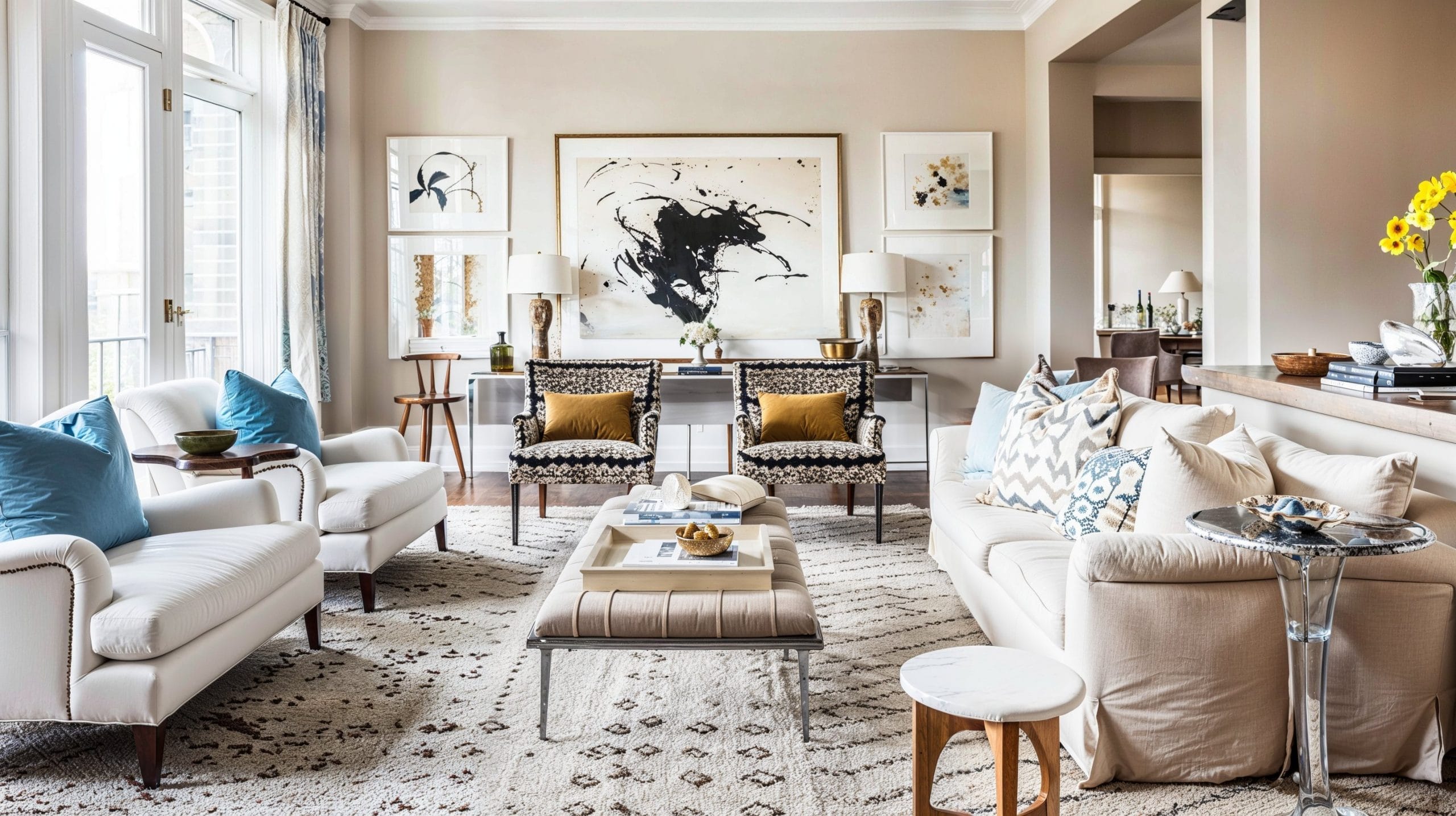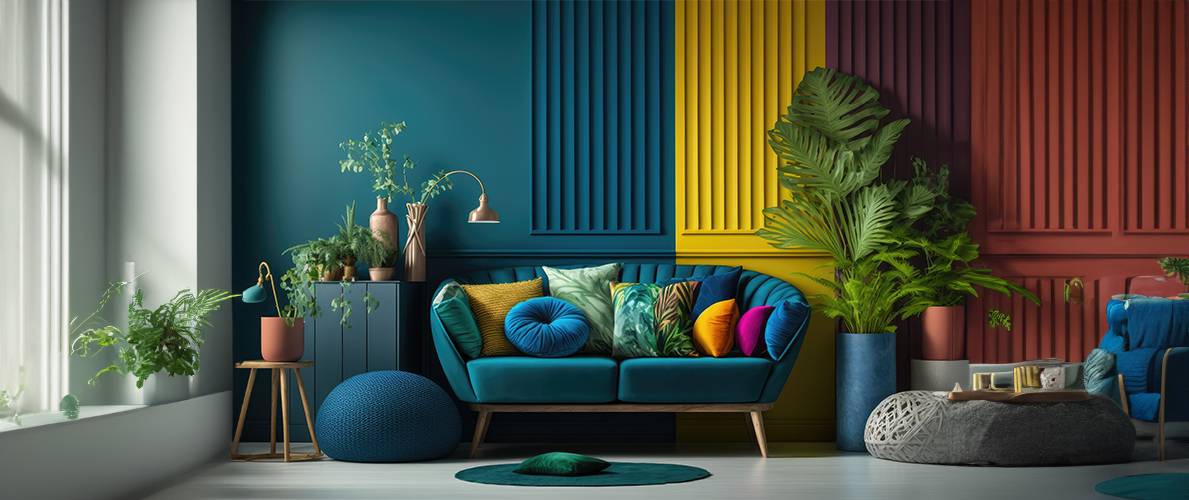Change Your Home With Crucial Concepts of Interior Decoration and Visual Appeals
The art of changing your home via the essential concepts of interior layout and aesthetic appeal needs a thoughtful approach that balances color, balance, and spatial understanding. By understanding the effect of color theory and the importance of structure and patterns, one can develop spaces that are not just visually attractive however additionally deeply individual. Attaining this balance entails greater than simple design; it includes a tactical arrangement and an eager understanding of just how each element interacts within a space. As we explore these fundamental principles, take into consideration just how they might redefine your understanding of home and personal expression.
Comprehending Color Theory
Color theory is a fundamental aspect of interior decoration that dramatically affects mood, understanding, and overall aesthetic. Recognizing the principles of color concept permits developers to create areas that resonate emotionally with residents while satisfying functional demands (Architecture Firm). Colors can be classified into three primary types: key, secondary, and tertiary. Each group plays a vital role in developing consistency within a room.
The psychological influence of shades is profound; warm hues such as reds and oranges evoke energy and warmth, while cool tones like blues and environment-friendlies promote calmness and serenity. Moreover, using corresponding colors boosts aesthetic rate of interest, developing striking contrasts that can elevate an area's charm.
Neutral colors, on the various other hand, offer as a versatile backdrop, permitting other layout elements to beam. It is vital to take into consideration factors such as lighting and the space's objective when picking a color combination, as these can alter the understanding of colors throughout the day.
Inevitably, a well-considered color design can change a room, promoting a sense of comfort and design that straightens with the occupants' preferences. Proficiency of shade concept is, consequently, a vital skill for any indoor developer intending to produce harmonious and inviting environments.
Accomplishing Equilibrium in Design
Just how can developers achieve a feeling of balance in their rooms? Achieving balance in design is basic to producing unified insides.
Asymmetrical balance, on the various other hand, relies upon varying aspects that still accomplish a natural look. This method enables for more vibrant and casual arrangements, providing passion while keeping equilibrium. By very carefully choosing differing sizes, shades, and structures, developers can create a visually compelling space that feels balanced yet energetic.
Radial equilibrium emphasizes a main focal factor with aspects emitting external. This style is commonly seen in round formats, where furnishings and design create a natural surround that attracts the eye internal.
Eventually, achieving equilibrium requires thoughtful consideration of scale, percentage, and the relationships in between elements. interior design firms. By masterfully applying these balance concepts, developers can change spaces into atmospheres that feel both cosmetically pleasing and functionally harmonious, enhancing the total experience for passengers
Relevance of Spatial Understanding

A keen sense of spatial recognition allows designers to determine prime focus within an area, directing the customer's interest to vital attributes while preserving a general feeling of unity. It additionally assists in the strategic positioning of lights, which can substantially affect the assumption of area and state of mind. In addition, understanding spatial connections allows the designer to provide to the certain demands of occupants, making sure that each location serves its designated purpose without jeopardizing looks.
Ultimately, spatial understanding is crucial for taking full advantage of the capacity of any interior room. By meticulously considering the interaction in between measurements, design, and function, developers can develop settings that not only fulfill sensible needs yet additionally stimulate a feeling of comfort and elegance, boosting the total living experience.
Incorporating Appearance and Patterns
Accepting a diverse series of appearances and patterns can dramatically enhance the aesthetic and responsive allure of an indoor room. The strategic use numerous materials-- such as timber, steel, textile, and rock-- produces depth and interest, making a room really feel a lot more inviting and dynamic. Integrating smooth surfaces with harsh structures can establish an equilibrium that draws the eye and involves the senses.
When integrating patterns, consider both range and repeating. Big patterns can function as focal points, while smaller sized, subtle styles can match various other components without overwhelming the area. Layering patterns, such as pairing flower paddings with striped throws, adds complexity and a feeling of harmony if carried out thoughtfully.
It is also important to maintain a natural color scheme, making sure that textures and patterns function together rather than compete for interest. By selecting a few crucial appearances and patterns, you can develop a merged visual that shows your personal style while enhancing the general setting of the space. Eventually, the careful incorporation of these elements can transform an ordinary area into a sophisticated atmosphere rich with personality and warmth.
Individualizing Your Room
Creating an area that official site reflects your personality is essential to accomplishing a truly inviting setting. Customization in interior decoration enables you to infuse your distinct design and interests into your home, changing it from a plain shelter into a haven that talks with that you are. Begin by selecting a color scheme that resonates with your emotions-- bold hues can energize, while soft tones provide tranquility.
Integrate art work and style that mirror your passions, whether it be travel, nature, or abstract ideas. Displaying personal collections, such as books, photographs, or keepsakes, can evoke valued memories and produce focal factors within a space. In addition, consider tailoring practical pieces, like upholstered furniture, to line up with your aesthetic choices.

Conclusion
In verdict, the makeover of a home through the crucial principles of interior layout and visual appeal necessitates a detailed understanding of read here color theory, equilibrium, spatial recognition, texture, and personalization. Each component adds substantially to developing a harmonious and functional living setting - luxury interior design. By thoughtfully integrating these principles, individuals can boost the aesthetic appeal and emotional resonance of their rooms, eventually cultivating a home that mirrors one-of-a-kind identities while giving comfort and practicality